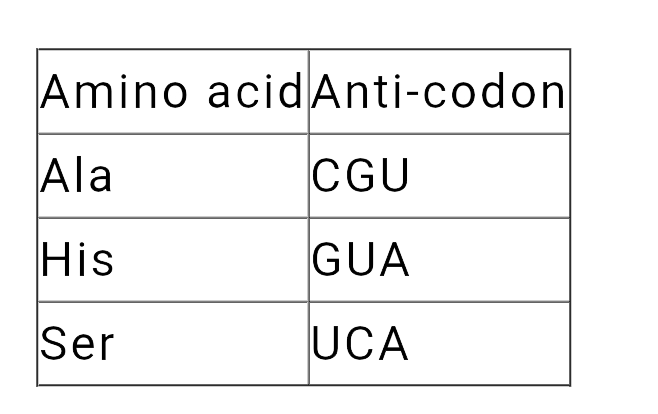If there are 999 bases in RNA that codes for a protein with 333 amino acids, and the base at position 901 is deleted such that the length of the RNA becomes 998 bases, how many codons will be altered
1
11
33
333
The correct Answer is:C
To solve the problem, we need to analyze the effect of deleting a base from the RNA sequence on the codons that are formed. Here’s a step-by-step breakdown of the solution:
Step 1: Understand the relationship between bases and codons
- Each codon consists of 3 bases.
- Therefore, the number of codons in the original RNA sequence can be calculated by dividing the total number of bases by 3.
Calculation:
- Total bases = 999
- Number of codons = 999 bases / 3 bases per codon = 333 codons
Step 2: Analyze the effect of the deletion
- When the base at position 901 is deleted, the total number of bases becomes 998.
- This deletion will affect the codons starting from the position of the deletion onward.
Step 3: Determine how many codons are affected
- The deletion at position 901 means that the codon that includes this base (which is the 301st codon, since 900 bases correspond to 300 codons) will be altered.
- Additionally, the next 99 bases (from position 902 to 999) will also be affected because the reading frame will shift due to the deletion.
Calculation:
- The codon at position 901 (301st codon) will be altered.
- The next 99 bases (which correspond to 33 codons, since 99 bases / 3 bases per codon = 33 codons) will also be altered.
Step 4: Total number of altered codons
- The total number of altered codons will be the codon at position 901 plus the 33 subsequent codons affected by the deletion.
Total altered codons:
- 1 (for the codon at position 901) + 33 (for the next codons) = 34 codons.
Final Answer:
The total number of codons that will be altered due to the deletion of the base at position 901 is 34 codons.
---
- Each codon consists of 3 bases.
- Therefore, the number of codons in the original RNA sequence can be calculated by dividing the total number of bases by 3.
- Total bases = 999
- Number of codons = 999 bases / 3 bases per codon = 333 codons
- When the base at position 901 is deleted, the total number of bases becomes 998.
- This deletion will affect the codons starting from the position of the deletion onward.
- The deletion at position 901 means that the codon that includes this base (which is the 301st codon, since 900 bases correspond to 300 codons) will be altered.
- Additionally, the next 99 bases (from position 902 to 999) will also be affected because the reading frame will shift due to the deletion.
- The codon at position 901 (301st codon) will be altered.
- The next 99 bases (which correspond to 33 codons, since 99 bases / 3 bases per codon = 33 codons) will also be altered.
- The total number of altered codons will be the codon at position 901 plus the 33 subsequent codons affected by the deletion.
- 1 (for the codon at position 901) + 33 (for the next codons) = 34 codons.
The total number of codons that will be altered due to the deletion of the base at position 901 is 34 codons.
Similar Questions
Knowledge Check
- Question 1 - Select One
A rectangular fish tank fish has a base 2 feet wide and 2 feet long. When the tank is partially filled with water, a solid cube with an edge length of 1 foot is placed in the tank. If no overflow of water from the tank is assumed, by how many inches will be level of the water in the tank rise when the cube becomes completely submerged?
A16B12C2D3
Most of the eukaryotic genes have stretches of bases that code for amino acids, which are called
View SolutionOn a planet from a distant galaxy, the pilot vehicle collected a sample of bacteria-like material. On analysis, it showed proteins having 30 types of amino acids while the DNA has 6 types of bases. In the genetic code, a sequence of how many bases should be serving as a codon?
View SolutionIdentify the correct DNA triplet on the original DNA template that will code for the amino acid histidine based on the following table.
 View Solution
View SolutionAssume that their are 8 types of nitrogen bases are available and 500 types of amino acid are available for protein synthesis, then in genetic code each codon made up by minimum how many nitrogen base :
View SolutionBased on the nature of R group there are many amino acids. If the R group in a proteinaceous amino acid is a methyl group, then the amino acids is
View SolutionThe single stranded DNA of phage ϕ×174 has 5400 nucleotides. If average protein contains 200 amino acids, how many different proteins could this phage DNA code?
View SolutionAssume that there are 6 types of the nitrogen bases are available and 37 types of an amino acid are avialiable for protein synthesis. In genetic code, each codon will be made up of how many minimum number of nitrogen bases?
View Solution

